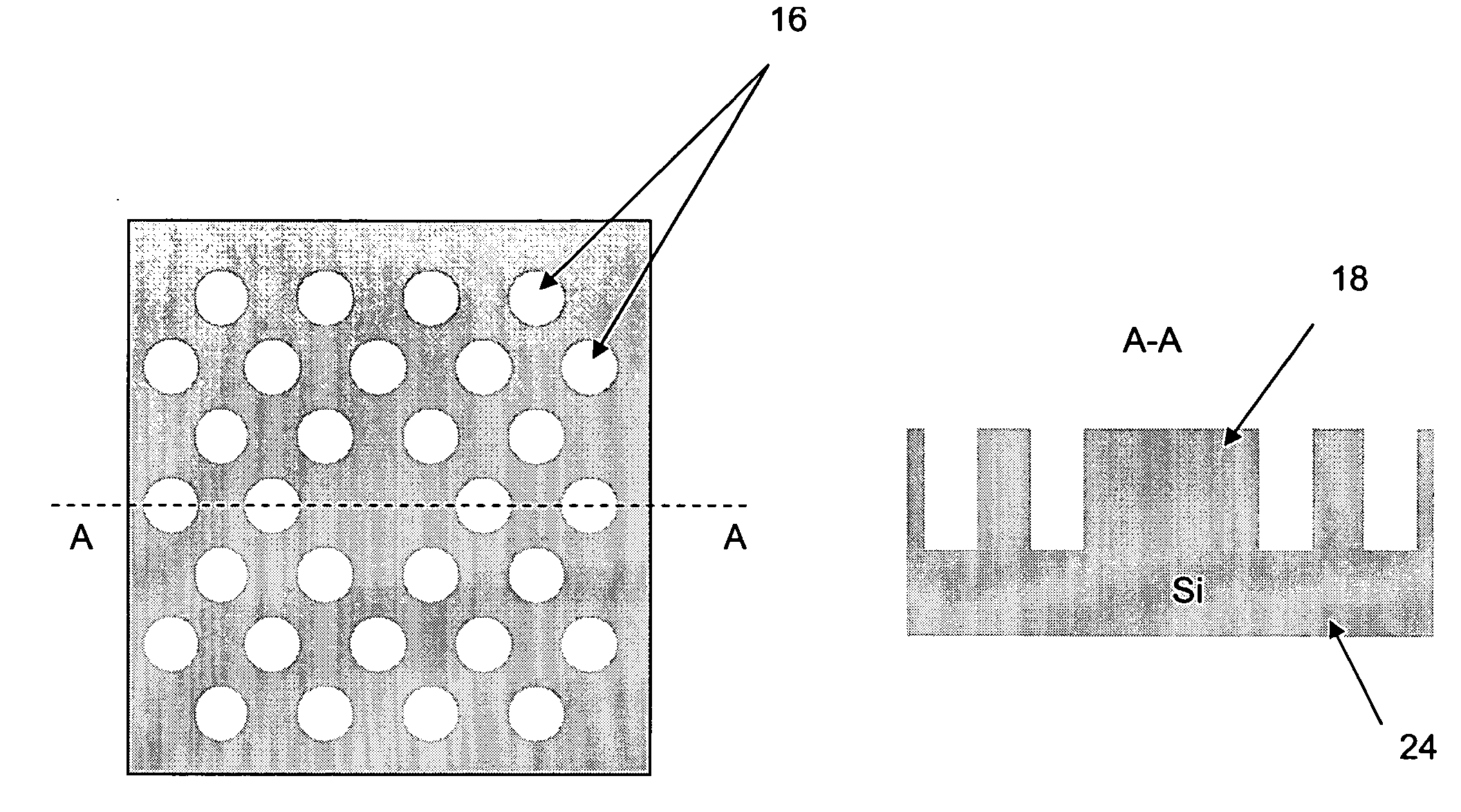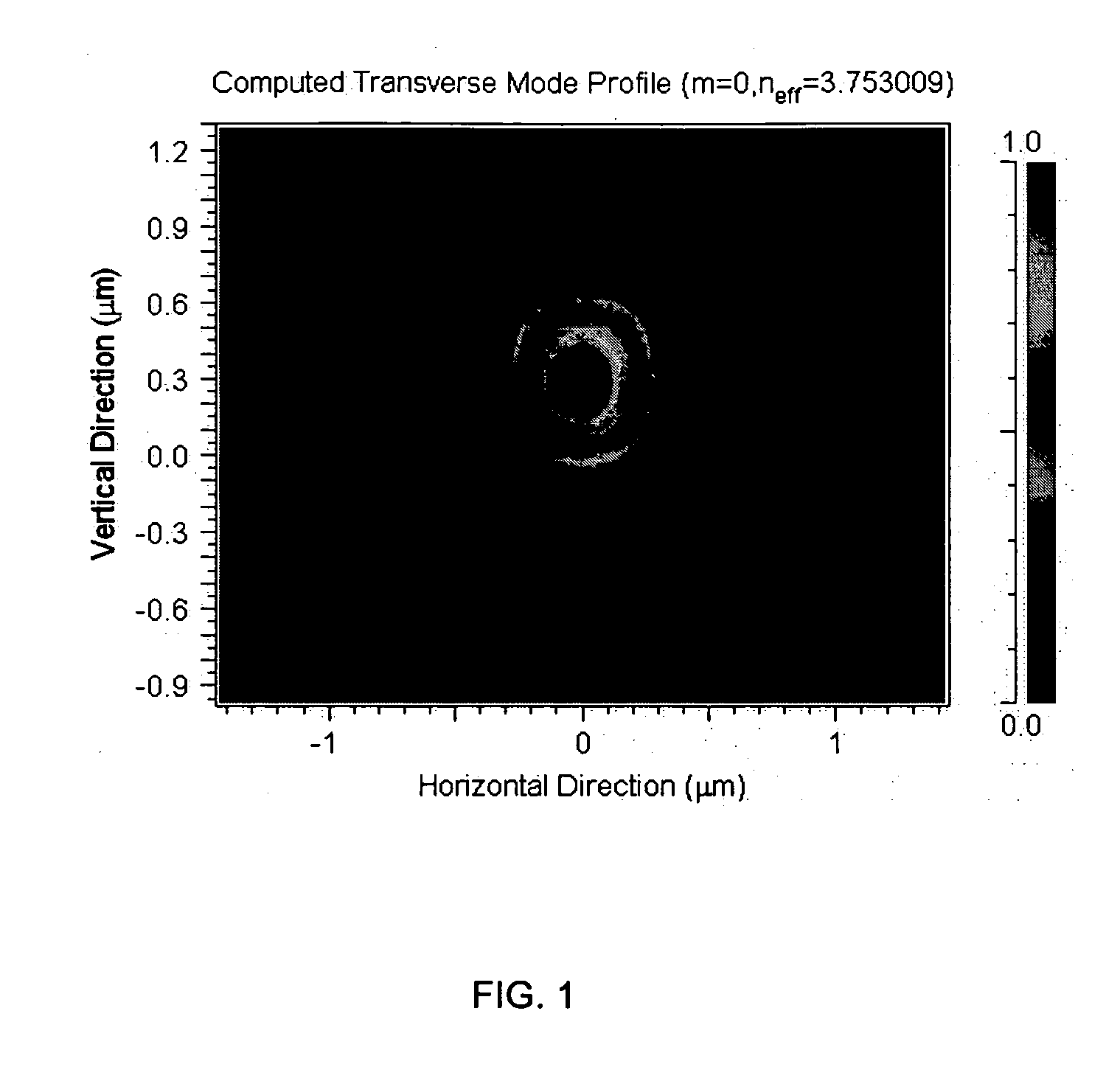Method of fabricating Ge or SiGe/Si waveguide or photonic crystal structures by selective growth
a selective growth and waveguide technology, applied in the direction of optical waveguide light guide, instruments, etc., can solve the problems of large scattering loss, 10 db/cm, scattering loss, etc., to improve crystal quality, improve crystal quality, and reduce scattering loss
- Summary
- Abstract
- Description
- Claims
- Application Information
AI Technical Summary
Benefits of technology
Problems solved by technology
Method used
Image
Examples
Embodiment Construction
[0016] The invention involves an inventive technique to make low loss crystal quality waveguides by selective growth, where there is no sidewall scattering loss from etching. The core idea is to grow a Si, Ge or SiGe waveguide directly on a small Si area surrounded by SiO2, since Ge or SiGe cannot grow on the top of SiO2.
[0017]FIG. 1 shows the mode profile of a waveguide structure having dimensions less than the propagation wavelength in the core material (in this case λ=1.55 cm). At this dimension, the scattering of light due to side wall roughness becomes very significant. This illustrates the constraints being faced and how difficult to attend waveguide structure to operate efficiently at those ranges.
[0018]FIGS. 2A-2D are schematic diagrams illustrating the steps followed according to the invention. A Si substrate 4 is provided and a SiO2 layer 2 is either formed or deposited on the Si substrate 4, as shown in FIG. 2A. Note other materials beside SiO2 can also be used in accor...
PUM
 Login to View More
Login to View More Abstract
Description
Claims
Application Information
 Login to View More
Login to View More - R&D
- Intellectual Property
- Life Sciences
- Materials
- Tech Scout
- Unparalleled Data Quality
- Higher Quality Content
- 60% Fewer Hallucinations
Browse by: Latest US Patents, China's latest patents, Technical Efficacy Thesaurus, Application Domain, Technology Topic, Popular Technical Reports.
© 2025 PatSnap. All rights reserved.Legal|Privacy policy|Modern Slavery Act Transparency Statement|Sitemap|About US| Contact US: help@patsnap.com



